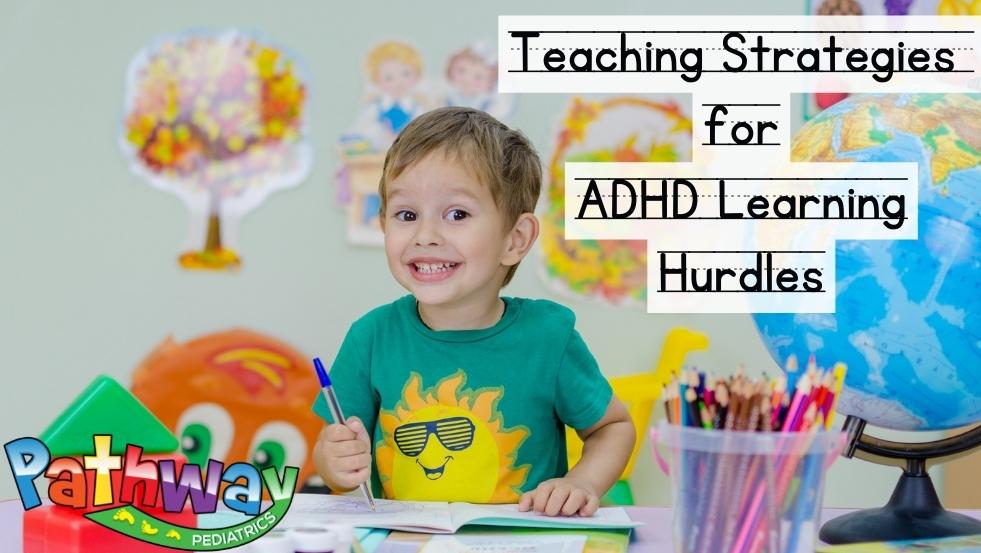Teaching Strategies for ADHD Learning Hurdles
November 30, 2022

Executive function (EF) deficits are commonly mistaken for — and exacerbated by — ADHD symptoms. The reverse is also true, making EF and ADHD inextricably linked yet also distinct.
To address a student’s challenges with reading comprehension and other academic skills, teachers and parents must first understand their origins and then follow these 3 steps to help a student build skills and confidence in school:
1. Create learning environments that lessen the impact of deficits.
2. Modify assignments to minimize the impact of weaknesses.
3. Teach skills that relate to the specific assignment and minimize the impact of deficits.
Learning Challenge #1: Reading Comprehension
The student reads a chapter of a history book but can’t stay focused on the content and can’t answer any of the comprehension questions at the end. in this case, ADHD inattention causes or worsens executive function difficulties with memory and organization of thoughts.
Teaching Strategy Solutions:
–Activate more senses and learning styles by using graphic novels, supplementary videos, or even historical action games to tell the story.
–“Prime” the student to focus on what matters by reviewing the comprehension questions before reading. This helps with organizational or comprehension challenges.
–Encourage the student to listen to the audio version of the literature assignment while reading along.
–Have each student transform one chapter into a dramatic audio play so that other students may listen along while they read the full book.
Learning Challenge #2: Writing Essays
A student turns in an accurate essay that’s fairly well written but it rambles and misses the central theme of the assignment. She thinks she’s covered the material and gets upset and frustrated when an evaluation suggests otherwise. Her motivation decreases.
Teaching Strategy Solutions:
–Provide “external scaffolding” by giving the student a bare outline with sections to flesh out. This provides an essay structure on which they can hang their facts and ideas. From this organized, sequential, and meaningful outline, the student can create a fuller narrative and increase confidence that she can complete the assignment.
–If a student resists rewriting, allow her to record herself “telling the story,” using the outline as a guide. This will help the child experience success while practicing effective organization skills that may be replicated when she tackles subsequent assignments over the course of the school year.
Learning Challenge #3: Math Burnout
The student “runs out of steam” after doing a few math problems, and then starts making careless errors, complaining, and getting disruptive- which are all signs of cognitive overload related to poor executive function skills.
Teaching Strategy Solutions:
–Ask the student to estimate the task difficulty on a scale of 1 (really easy) to 3 (way too hard). Then ask, “What can we do to move a task from level 3 to level 2?” (The answer might be: “Start with the problem that looks easiest,” or “Just do one at a time.”)
–“Seed” the assignment by including one problem that the student successfully completed last time, and start with that. Anchoring a child in an earlier success will help him move toward- not away from- the task.
–When your child completes a math problem successfully, ask her, “How did you feel after solving that?” This triggers a success mindset: “This is not too hard” and “I’m pretty sure I can do it!” At home and at school (indeed- in life!), success leads to increased motivation, better focus, and a brain that wants more success.
Source: https://www.additudemag.com/download/reading-comprehension-math-writing-adhd-teaching-strategies/
Next Post >>